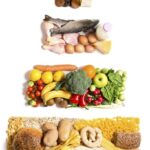Ever wondered what happens to that delicious meal after you swallow it? The journey from plate to… well, you know… is a fascinating one! This article explores the amazing process of digestion, explaining how your body transforms food into poop. We’ll delve into the roles of different organs, the reasons behind poop’s color and odor, and why fiber is your gut’s best friend.
The digestive process begins in your mouth. As you chew, saliva starts breaking down the food, forming a swallowable mass called a bolus. This bolus travels down your esophagus and into your stomach.
From Mush to Nutrients: The Small Intestine
In your stomach, powerful acids and enzymes further break down the bolus into a mushy liquid. This liquid then enters the small intestine, the primary site of nutrient absorption. Here, your body extracts vital vitamins, minerals, and other essential components from the food.
The Large Intestine: Where Poop Takes Shape
After the small intestine has done its job, the remaining undigested material moves into the large intestine. This is where poop begins to form. The large intestine absorbs water and electrolytes from the waste, solidifying it. What’s left is a mixture of undigested food, bacteria, dead cells, and other waste products that your body can’t use.
Why is Poop Brown? The Role of Bile and Bilirubin
Poop’s characteristic brown color comes mainly from bile and bilirubin, substances produced by the liver. Bile aids in fat digestion, while bilirubin is a byproduct of red blood cell breakdown. These yellow-green and yellow pigments are excreted into the digestive tract and eventually tint your poop brown. Diet can also affect the color of poop, with certain foods causing variations.
The Stinky Truth: Why Poop Smells So Bad
The unpleasant odor of poop is due to the activity of bacteria in your intestines. These bacteria break down undigested food, producing gases like methane, hydrogen sulfide, and ammonia. Specific foods contain compounds that release distinct and strong smells as they are broken down, further contributing to the odor.
The Germ Factor: Bacteria in Poop
Poop contains trillions of bacteria, making them a major component of its composition. These bacteria are part of your gut microbiome and play a crucial role in maintaining your health. They aid in digestion, produce vitamins, and protect against harmful pathogens. However, while these bacteria are beneficial in your gut, it’s essential to avoid contact with poop to prevent potential infections.
Why We Need to Poop: Preventing a Backup
We need to poop to eliminate waste products and make room for more food. Think of your intestines as a stretchy tube with a limited capacity. Regular bowel movements prevent the buildup of waste, which can cause discomfort, bloating, and other health problems.
Fiber: Your Digestive System’s Best Friend
Fiber is a type of carbohydrate that your body can’t digest. It adds bulk to your stool, making it easier to pass through the intestines. Fiber also helps regulate bowel movements, preventing constipation and diarrhea. Good sources of fiber include fruits, vegetables, whole grains, and legumes.
Farts: The Gaseous Byproduct of Digestion
Farts are simply gas that accumulates during the digestion process. They smell bad for the same reasons as poop: the gases produced by bacteria as they break down food.
In conclusion, the process of how food turns into poop is a complex and fascinating journey through your digestive system. From the initial breakdown in your mouth to the final elimination of waste, each organ plays a vital role in extracting nutrients and maintaining your health. So, the next time you… well, you know… you can appreciate the amazing work your body is doing.
Remember to maintain a balanced diet rich in fiber and stay hydrated to support a healthy digestive system.
